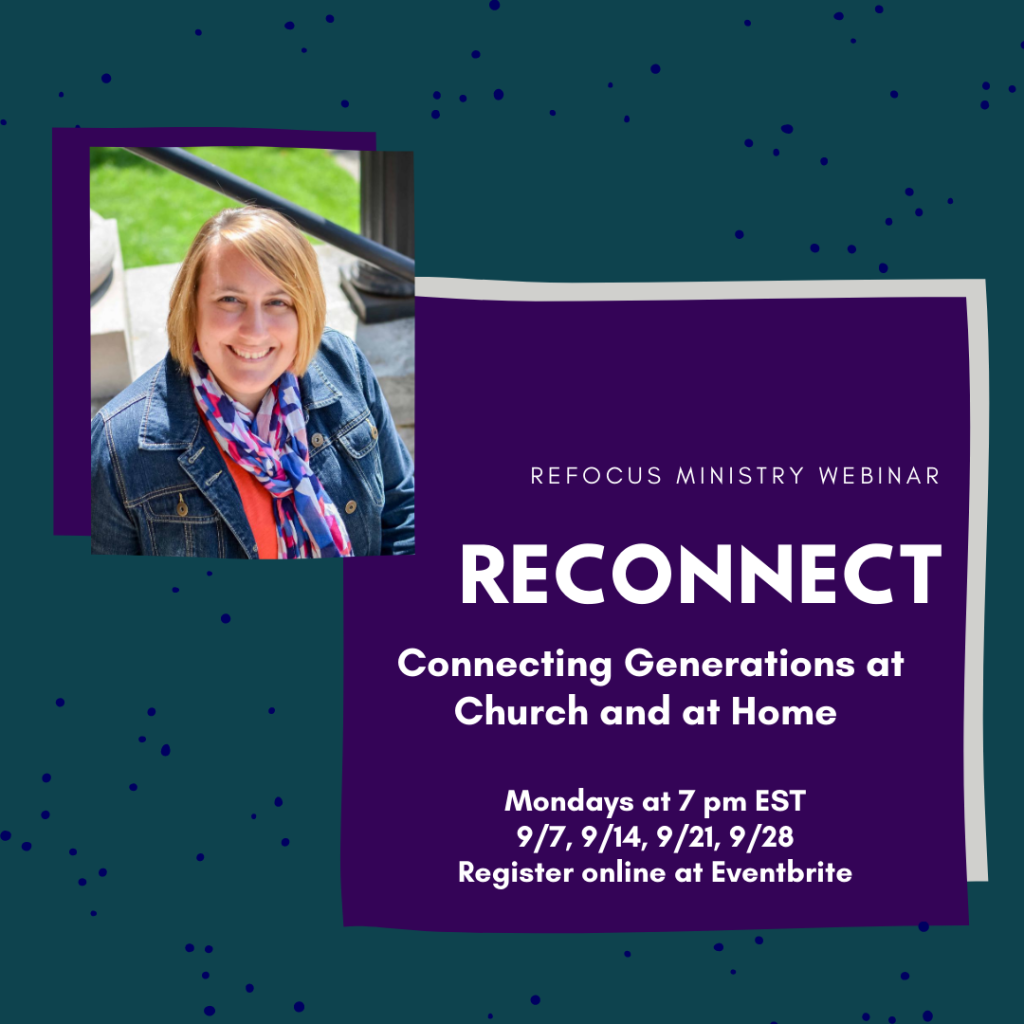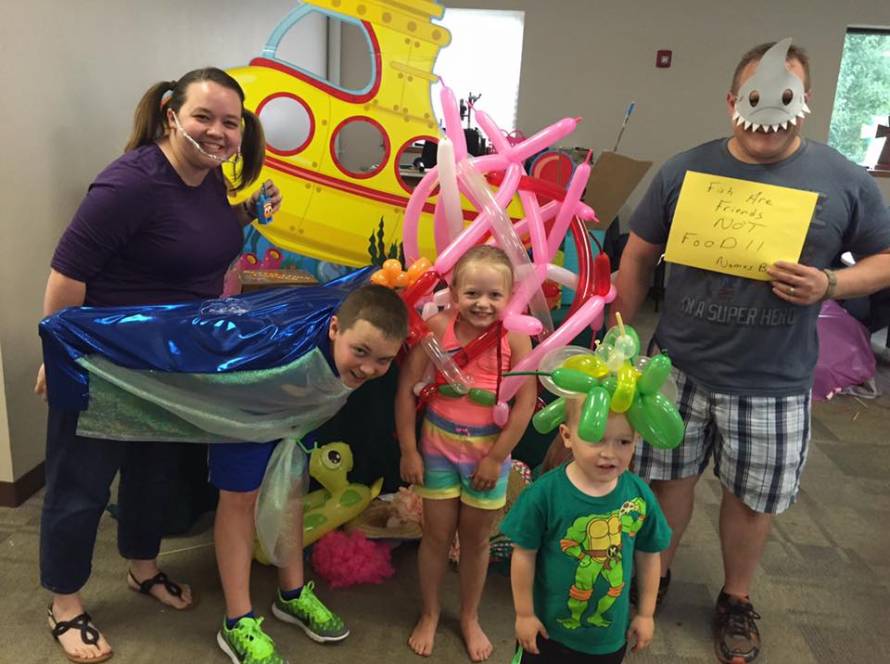“I didn’t even know you had another daughter!”
This statement stopped me in my tracks a couple of years ago. It happened in the hallway of a church building that I had just started serving in. The phrase was uttered by one of the most faithful older members of our church to one of our most faithful younger members. As I glanced over at them, my mind scrambled to understand how two faithfully attending church members who obviously knew one another and genuinely cared for each other had missed such a momentous occasion as the birth of a child….three years prior!

It didn’t take long for my mind to fill in the gaps. The older woman, like many older members of our church family, attended the 8:15 am “traditional” service in the main sanctuary. Afterwards, at 9:30 am, she would go down the stairs to the Sunday School classroom she’d been meeting in for years and meet with her class. At 10:30 am, she would use the lower exit and head out to her car to go home.
Meanwhile, the young mother and her family would arrive at the church at 9:30 am for the “blended” service held in the Community Center, down the hall from the main sanctuary. During that service, her children would be on the first floor under the Community Center in their nursery and Children’s Church. After service, at 10:45 am, she would move down the hall to her Sunday School class and her children would remain in the same downstairs hallway for Sunday school. Then, at 12 pm she would gather her family and head home.
Sound familiar?
How in the world were these women ever going to see each other, let alone, see the children in question? When the daughter was born, a rose was placed on the pulpit to celebrate her birth… but only in the service she attended. Her baptism/dedication, while announced in the bulletin, was only celebrated in the Community Center.
The child’s entire interaction within the church building from the time she was born took place on one floor in one or two classrooms with a set schedule of church employees and volunteers.
So, it should have come as no surprise when I heard the older woman exclaim in surprise that she didn’t even know the three-year-old girl existed…but it did. And then the surprise quickly morphed into, “This is not okay! Something has to be done. This is not how a community should act.”
What?
Thus began a journey that eventually led to a weekly intergenerational service, quarterly all-church worship services, intergenerational prayer partners, and multi-generational events. But there was one thing that didn’t change – the building.

In spite of our work to create intergenerational connections, the architecture of the building we met in often presented a challenge. In fact, it was evident that the building itself was structured in such a way as to limit interactions of multiple generations on any given day.
So What?
The reality of architecture limiting our generational contact is consistent with the findings of research. In fact, even the designs of our homes have changed over time leading to lack of generational connectivity. In the past, homes were created with the expectation of a nuclear family and often the grandparents living together in a single space with perhaps a bedroom or two for some privacy. Today, the structure of large single-family homes with multiple rooms and bedrooms create financial, spatial and cultural barriers to intergenerational living (Source).
How does that happen?
- Lack of available affordable housing in multigenerational neighborhoods has led to “age ghettos” where homeowners are primarily older and renters are primarily younger.
- Homes in general are usually occupied by 1) single young people or 2) aging couples/singles or 3) a single family rather than multiple generations as in the past .
- And, as we explored in the last article, these houses tend to group together according to age and life experience so we end up with neighborhoods, retirement villages, or sections of a city mainly occupied with people of the same generation.
Older Americans especially experience age segregation because of living on their own and not in a familial home. Most older Americans living alone are in doing so in isolation without intergenerational connection or relationships. (Source). The result of this spatial age segregation has led to a growing epidemic of loneliness among the elderly who are often homebound and without outside contact for days on end.
Other buildings are also created with specific generations and ages in mind. In addition to spatial constructs like sounds (music, television, noises) and sights (screens, lighting, colors), architectural constructs like stairs, hallways, gates/doors, open/closed space, and seating/resting areas send messages about who should be in a space.
Architecture plays a huge role in communicating who is welcome and attracting a certain “audience” to occupy a space.
Now What?
First, let’s consider the architecture of our gathering spaces.
- Are there ways that our building is inhibiting generational connections?
- Can any of these barriers be removed?
- Could space be redefined by an architectural change like removing a barrier, increasing accessibility, or redirecting traffic?
Second, get creative in thinking about how the space, as is, can be used for multigenerational community.
- Could other spatial features, visual or auditory, be put in place to make the space more welcoming to all generations?
- Locate places in the building that would be appropriate for gathering more than one generation.
- Create avenues to invite people into spaces they may not normally go like multigenerational events or small group meetings in different locations.
Finally, be aware that architecture might be working against you as you seek to connect members in your congregation to each other across generational lines.
- Think of ways you can bolster those relationships that don’t depend on “being in the building.”
- Encourage older members to go watch kids play tee ball or perform a dance recital.
- Invite families to “adopt” an older person as a “grandfriend” and visit with them.
- Set up a way for teenagers to eat lunch with adults who are serving in the community or sharing Christ in their workplace.
Don’t let the building the church meets in define how you do church; be the church that occasionally meets in a building!
Tweet
Ready to Start, Not Sure Where?
ReFocus Ministry is pleased to present a four-part webinar series on generational discipleship and connection for churches interested in exploring intergenerational ministry both in their church and in their homes. Each session will focus on a unique aspect of gathering generations together, both the challenges and opportunities, as well as practical tips to begin implementing now during this time away from regular church gatherings.

Sessions can be attended individually or all four can be attended as a series.
Session 1 – ReConnect. This first session of the webinar focuses on defining generations, generation gap, and the need for generational discipleship in your church. This is the “What” behind generational discipleship.
Session 2 – ReGenerate. This session focuses on the the research, the reasons, and the heart behind connecting generations from both a secular and spiritual viewpoint. This is the “Why” behind generational discipleship.
Session 3 – ReProduce. This session offers practical tips, strategies, and ideas to being connecting generations in your faith community and in homes in meaningful, lasting, life-changing ways. This is the “How” behind generational discipleship.
Session 4 – ReLease. It’s time to go and do! This session will provide a discussion and debrief around the questions, “What? So What? Now What?” and give you an starting point for incorporating generational discipleship as a meaningful part of your faith community. This is the “Who” behind generational discipleship at your church and in your home!
Anyone registered for all four sessions will receive a FREE half-hour coaching session/follow-up specific to your ministry needs.
To register, go to https://www.eventbrite.com/e/reconnect-a-webinar-for-generational-connections-tickets-116093734485. Questions? Feel free to email me at christina.m.embree@gmail.com. Can’t wait to journey with you!
For more information about
- Kids in Worship
- Determining which Type of Family Ministry model works best for your church
- Discipleship in Intergenerational community
- Encouraging the continued conversation through Practical Discipleship at Home
- Seminars, Workshops, Coaching
Check out to ReFocus Ministry or “like” our Facebook page. Join our conversation at theReFocus Family and Intergen Ministry group on Facebook.
About this Blog

Refocus Ministry was started by Christina Embree, wife to Pastor Luke, mom to three wonderful kids, and church planter at Plowshares BIC. She also serves as the Minister of Generational Discipleship with the Great Lakes Conference of the Brethren in Christ.
With years of experience in family ministry and children’s ministry, she is passionate about seeing churches partnering with families to encourage faith formation at home and equipping parents to disciple their kids in the faith. She recently graduated with a Masters of Arts in Ministry focusing on Family, Youth and Children’s Ministry at Wesley Seminary, she also blogs at www.refocusministry.org and is a contributing blogger at D6 Family, ChurchLeaders.com, and Seedbed.



2 Comments